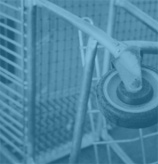
Consumer Bankruptcy Committee
ABI Committee News
Volume 4, Number 2 / March 2006
In This Issue:
The Anti-Cramdown Provision of Bankruptcy Code §1325(a)(9): A Home Run for Creditors, or Are Runners Left on Base?
by: Howard Gershman
Flamm Boroff & Bacine, PC; Blue Bell, Pa.
A most frustrating baseball statistic is the “LOB,” runners left on base, representing missed opportunities to score runs. Creditors relying on BAPCPA’s anti-cramdown provision to make life simpler and richer by precluding cramdown of purchase-money interests will, from time to time, have to leave a few runners and claims stranded on base.
First Case Interpreting a Debtor’s Creative Use of IRS Expense Allowances Disallows the “Double Dip”
by: Alane A. Becket and William A. McNeal
Becket & Lee, LLP; Malvern, Pa.
If the trustee or an unsecured creditor objects to the debtor’s plan, the court may not approve it unless it provides that all of the debtor’s projected disposable income for either a three-or five-year period, depending on the debtor’s income level, is applied to pay unsecured creditors. (11 U.S.C. §1325(b)(1)(B)). The Bankruptcy Code, as amended by the Bankruptcy Abuse Prevention and Consumer Protection Act of 2005 (BAPCPA), calculates disposable income by deducting permissible personal expenses from the debtor’s current monthly income (CMI). If a debtor’s CMI exceeds the median income (adjusted for family size) in his/her state, then the deductions for computing disposable income are those found in tables published by the Internal Revenue Service (IRS) for use by its agents in determining a taxpayer’s ability to pay a delinquent tax. For personal spending categories such as food, clothing and miscellaneous expenses, the IRS maintains national standard expense tables. For transportation and housing, the tables are adjusted for regional cost differences. Under BAPCPA, a debtor may also deduct certain other expenses such as payments for health care, schooling and care for elderly or ill relatives. Finally, a debtor is permitted to deduct the amounts necessary to maintain payments on secured property from his or her income. These expense categories are formalized in official form B22C, which was developed by the Advisory Committee on the Bankruptcy Rules for use by a chapter 13 debtor.
Individual Chapter 11 Cases after BAPCPA
Under BAPCPA, chapter 11 more closely resembles a “high-end” version of chapter 13. For example, new §1115 makes post-petition earnings of a chapter 11 debtor (like those of a chapter 13 debtor under §1306(a)) subject to creditor claims. Section 1129(a)(15) adds a “disposable income” confirmation requirement similar to §1325(b), and §1127(e) permits post-confirmation modification of a plan.
Agenda for Annual Spring Meeting
The Consumer Committee will meet at ABI's Annual Spring Meeting on Saturday, April 22, at 9:30 am and will review decisions being rendered by the courts under the Bankruptcy Abuse Prevention and Consumer Protection Act of 2005 (BAPCPA). The presentation is designed to be both a case update on decisions on consumer-related issues and an analysis of the principles of statutory construction and interpretation emerging from those decisions. Thus, the panel will highlight both the substantive outcomes and the approaches being used by the courts in interpreting the sometimes unfamiliar and difficult language contained in some provisions of BAPCPA. The panel will include Hon. Bruce Markell, U.S. Bankruptcy Judge for the District of Nevada and Senior Fellow in Bankruptcy and Commercial Law at the William S. Boyd School of Law, University of Nevada Las Vegas; David L. Rosendorf, shareholder at Kozyak, Tropin & Throckmorton in Miami who maintains the ABI BAPCPA blog; and additional panelists to be named later.